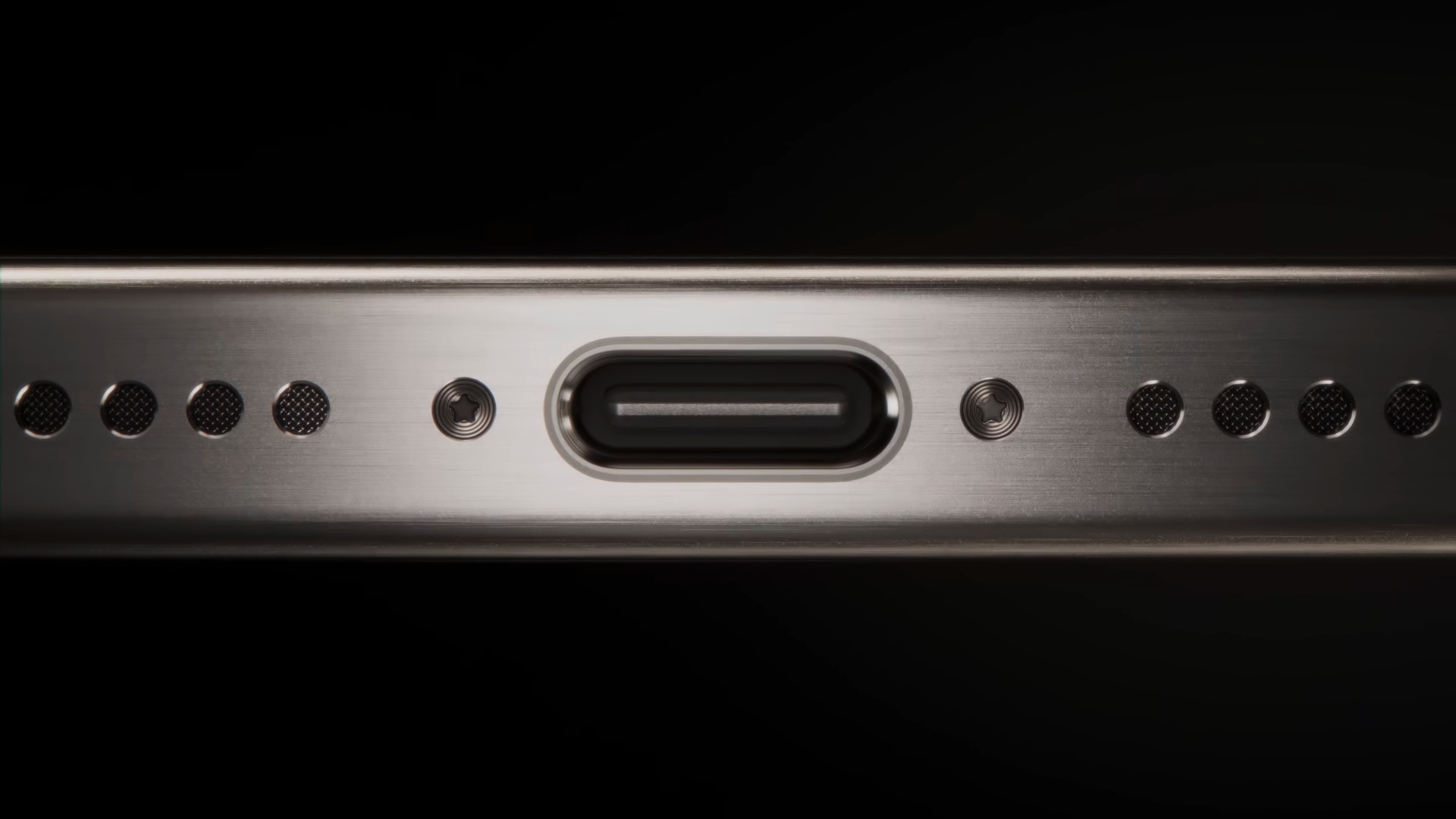All iPhone 15 and iPhone 15 Pro models support mirroring their displays and natively outputting 4K HDR60 video via USB-C DisplayPort.

By comparison, display mirroring and video output on the iPhone 14 and iPhone 14 models is restricted to 1080p resolution and no HDR.
To output 4K HDR60 video or mirror the display, simply plug an external monitor directly into the iPhone’s USB-C port using a USB-C to DisplayPort cable. Those bright, crisp videos full of rich, vibrant colors that you shot with your iPhone will look their best on a DisplayPort-compatible monitor in 4K HDR at 60 fps.
Folks who shoot and edit video for a living can now view their iPhone recordings on a reference monitor or a similar pro-grade output device via USB-C DisplayPort.
iPhone 15 outputs 4K HDR video via USB-C DisplayPort
Only direct USB-C connection to a DisplayPort monitor gets you perks like 4K resolution, HDR color and a silky smooth 60 fps refresh rate. HDR is unsupported when an iPhone 15 or iPhone 15 Pro is connected to a TV via an HDMI adapter.
Manufacturers have long been able to build support for the DisplayPort video interface into USB-C, and that’s precisely what Apple has done with the new phones.
Unlike the iPad Pro, the iPhone 15 lineup lacks an extended display mode that would turn them into a desktop computer akin to Samsung’s DeX interface.
Connecting your iPhone 15 to a TV
While connections to DisplayPort devices work without a dongle, mirroring the iPhone’s display or outputting video to a TV requires Apple’s USB-C Digital AV Adapter (model A2119) or a similar accessory from other manufacturers.
Apple’s adapter also has USB-A and USB-C ports, letting you connect a standard USB device, like a memory card reader or an external drive, along with a USB-C charging cable—while outputting video to a TV.
Before clicking the Buy button, however, know that this thing sports 4K resolution but limits the refresh rate to 30 fps. Plus, it only supports standard dynamic range (SDR) video, as per the fine print on the iPhone 15 Tech Specs page.
If you plan on recording 4K HDR60 ProRes video directly to external storage, remember that only the iPhone 15 Pros support USB 3.2 Gen 1 data transfer speeds over USB-C. You’ll also need the right cable—Apple will happily sell you a shorter 1-meter Thunderbolt 4 Pro cable for $69).
External video support on the iPhone 14 family
The iPhone 14 models can also output video and mirror their screens but in the paltry 1080p resolution and no HDR. Video outputting and display mirroring on the iPhone 14 family requires a Lightning-based dongle.
For HDMI devices like TVs, you’ll need Apple’s Lightning Digital AV Adapter ($49) or similar. To mirror the display or output video from your iPhone 14 and iPhone 14 Pro to a VGA-equipped TV, display, projector or other compatible screen, you’ll need to use the company’s Lightning to VGA adapter ($49) instead.